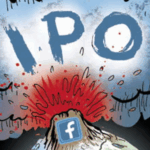Rocket Fuel is adding SaaS to its revenue mix, but slowly.
During the company’s Q3 earnings call with investors on Wednesday, CEO George John said Rocket Fuel now has 137 “licensee customers” buying through one of its three software-as-a-service channels.
Those channels are: Rocket Fuel’s self-serve offering, called Mission Control; the company’s partnership with Dentsu subsidiary CCI in Japan; and [x+1], the demand-side and data-management platform company Rocket Fuel acquired in September.
But the company is “somewhat indifferent” to whether a marketer or agency chooses to license its programmatic buying platform or to rely on Rocket Fuel for managed services, John said. He gave the example of two hypothetical customers: One that licenses the platform and operates it themselves and another that writes a check for $1 million, of which Rocket Fuel may keep $500,000 after managing the spend.
“What we really drive the business on is revenue ex-TAC,” John said.
In contrast to those 137 SaaS customers, Rocket Fuel has well over 1,000 customers that use it on a managed-services (i.e. insertion-order) basis. The total customer count at the end of Q3 was 1,446, which is up from 938 at the end of Q3 2013 but flat sequentially.
Top Line Strong
Overall revenue grew 63% in Q3, to $102.1 million. Rocket Fuel completed its $230 million acquisition of [x+1] in early September, and so the top-line revenue figure includes [x+1]’s $6 million contribution for the quarter. (Read the earnings release.)
Revenue after traffic acquisition costs was $59.1 million, up 64% from the third quarter of 2013. Therefore the company’s media costs were approximately $43 million and its media margin was approximately 58% – about on par with a year ago.
Revenue from other channels, including mobile, social, and video, was $44.9 million. This is a 177% growth from the $16.2 million that those channels brought in a year ago, suggesting that Rocket Fuel has had considerable success in ramping up all these important areas of consumer growth. Rocket Fuel said mobile revenue was by far the largest contributor to its “other channels” segment, at 30% of overall revenue.
Neither video nor social are yet material to the business.
Supply Ties
Asked by an analyst about the impact of ad tech acquisitions by big media companies – e.g. AOL/Adap.tv, Facebook/LiveRail, Twitter/MoPub, Yahoo/BrightRoll – John said the transactions have not restricted Rocket Fuel’s access to supply.
“The impact on Rocket Fuel has been minimal,” he said. “It’s great to see some of our partners have nice outcomes, but it’s mostly neutral in terms of their supply relationships with Rocket Fuel.”
Agency Ties
John also revisited comments made during the company’s last earnings call, to the effect that some agencies preferred deals with programmatic platforms, in some cases locking Rocket Fuel out of media plans or reducing its share of budget. In response to that trend, Rocket Fuel created an agency relations team and began pursuing deals at the holding-company level.
“It was important for us to begin building relationships with CEOs and heads of media at the major holding companies,” in contrast to account teams, he said.













